Speaker
Description
In metallurgy, during the manufacturing process, liquid metals often have impurities such as solid oxide particles. Often, they can be removed from molten metals using mechanical filters (sieves). In praxis, due to the filter clogging and greater metal loss higher efficiency of this process is desired.
Another approach is to use centrifugal (inertial) force and the fact that liquid metals are good electrical conductors – by applying traveling magnetic field which causes the molten metal to move. This, together with the fact that the metal and impurities have different densities, can be used to create a centrifugal filter.
In real-world applications, the estimation of power required for centrifugal filter to work is of most importance. This work generated the heat power density in the liquid metal due to the induced currents is explored both analytically and numerically.
The goal of this presentation is to show the analytical approach used for power estimation in simplified 2D case and to compare obtained results with numeric model.

